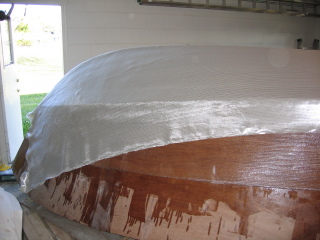 |
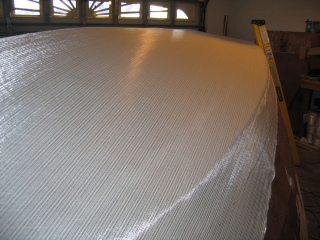 |
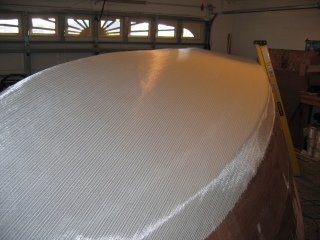 |
| After sanding rough spots and the edges of cured fiberglass overlap areas it is now time to begin
the second skin of fiberglass on the hull. |
As luck would have it, this full sheet of fiberglass used up the rest of the roll that I had been
using, a foot shorter and I would have had to use it for something else. You can see marker on the
fiberglass as I measured a 6" overlap. |
Once I finished measuring the overlap the glass was cut and then rolled back up so I could wet the
surface with an epoxy slurry. |
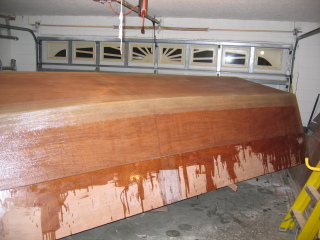 |
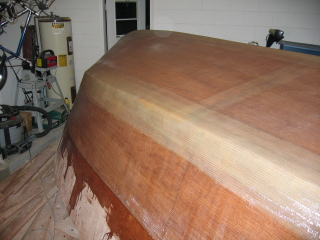 |
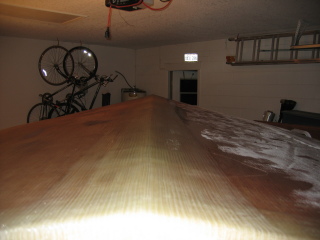 |
| The hull is shown here with the 2nd and final piece of fabric on half of the bottom. |
Another view showing the hull and the overlap areas. |
A view down the keel. The keel will have 6 layers of fiberglass on the outside. 2 from overlapping
biaxial tape and 4 from overlapping fabric (2 layers per skin). |
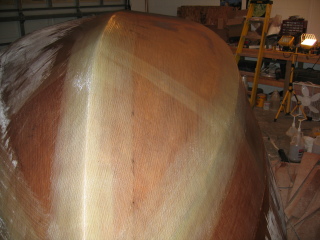 |
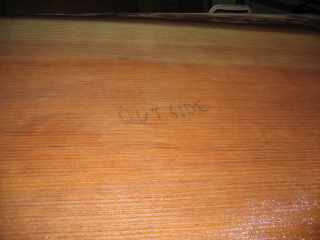 |
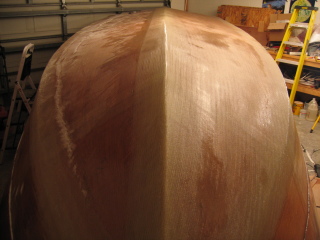 |
| A view of the bow, you can see that the thicker areas of fiberglass are not as clear.
|
Even with two layers of biaxial fiberglass fabric I can still read some of my original plywood labels
and lines way back when I was measuring and cutting. |
A view of the bow shot straight down the keel. |
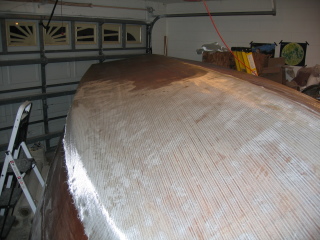 |
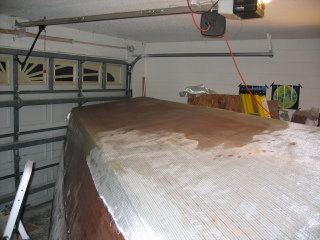 |
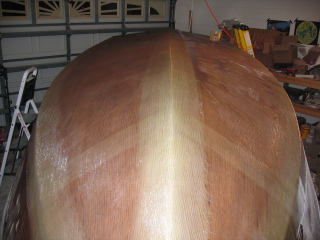 |
| I repeated the previous steps, having measured and cut the bottom fiberglass and started mixing huge
batches of epoxy (most I did was 1.75 quarts) and dumped it on the fabric and spread it out with rubber squeegees. |
Another view of the fabric being set up with epoxy. |
Completely glassed bottom shown from bow. |